Brass Balls
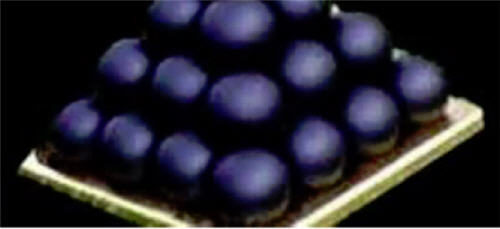
They say this is going to be a hell of a cold winter coming at us. It is just brisk oday, but out West it is already in the low teens overnight, and probably single digits shortly. You could say, at no risk of exaggeration, that it is going to be cold enough out there to freeze the balls off of a brass monkey.
I have another installment of the story of Mac’s war years, once brought to my attention by my pal Brian, whose father had an exchange with the legendary Jasper Holmes, also known as Alex Hudson in his writing days at the Saturday Evening Post.
Jasper was an interesting guy. In the olden days of iron men and wooden sailing ships, cannon balls were stacked on the decks on brass plates called “monkeys.” The plates had indentions in them that held the balls on the bottoms of the stacks. Brass, however, expands and contracts with the temperature and if it got cold enough, the cannon balls could fall…giving real foundation to the phrase “cold enough to freeze the balls off a brass monkey!”
According to the United States Navy Historical Center, this is a legend of the sea without historical justification. The Center has researched this because of the questions it gets and says the term “brass monkey” and a vulgar reference to the effect of cold on the monkey’s extremities, appears to have originated in the book “Before the Mast” by a fellow named C.A. Abbey. It was said within the covers of that tome that there was a time when it was so cold that it would “freeze the tail off a brass monkey.”
Ever the killjoy Puritan, tortured by the idea that someone, somewhere is having a good time, the Navy Historical Center responds that there is “no evidence that the phrase had anything to do with ships or ships with cannon balls.” So I obviously am not going to start with a story that is a blatant falsehood.
Oh, hell, I do it all the time. So there it is- we are facing a winter that will be cold enough to freeze the balls off a brass monkey.
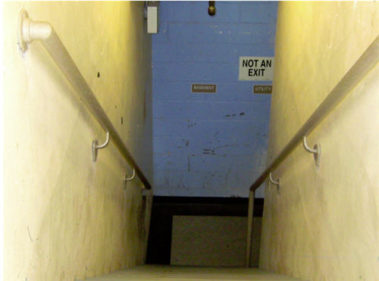
(Definitely not an exit- these are the steps leading down to The Dungeon)
Anyway, I thought it might be useful to visualize the place that Joe Rochefort’s Codebreakers worked. We are lucky to have a diagram of The Dungeon, the basement office space where the men who broke the Japanese Naval Code (JN-25) worked. Mac did it on a napkin at Willow one afternoon, and it gave me goosebumps, having him note the names that I know only through him and the history books.
Mac is the last of the line, and with his passing, there is not a great deal left to be discovered on this side of the veil.
Looking at the diagram this morning, thinking of the moment a couple weeks ago when I stood in front of the door into the place that had once been Station HYPO, I remembered a speech made by another officer who served under then-Commander Joe Rochefort.
Let’s take an exercise this morning in seeing where everyone was. At the bottom of the diagram are the steps Left Coast Guy and I walked down, to confront the alarming notice that no cameras or recording devices could pass that door, and I imagined in that moment that on the other side was a Marine with a gun for security, and behind him the ghostly figures of Joe Rochefort and Mac and all the rest of them.
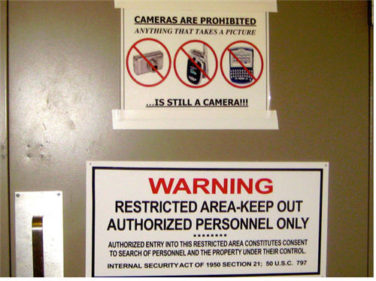
Since we are going to try to get the Navy to wake up and preserve its amazing history (something our beloved hide-bound institution can be made to do only grudgingly) I thought I would try to marry up the imaginary scene behind The Green Door, which is wasn’t, but what we have always called the place where the cryppies and the intel bubbas worked.
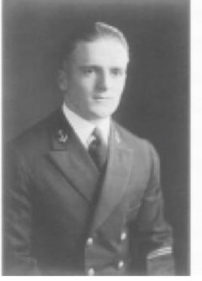
In a speech in 2002, CAPT Forrest R. “Tex” Biard, one of those officers, gave an account of who-was-who in the Station HYPO zoo. Of course we have to take memory and the passing of years with a certain grain of salt, but now Tex is gone, and the youngest among them- our pal Mac- is likewise unreachable except through the offices of Madam Sonia the Psychic, whose previous reporting has been unreliable.
Here are the basics: Biard was Annapolis Class of 1934, and he was the last surviving Japanese linguist when he passed away at the age of 96 in 2009.
Tex got to Pearl in September of 1941 after escaping from Tokyo with the last class of Naval officer students while there was still peace. He reported to Pearl in the last months of peace, and was there in the attack on Sunday, December 7th.
Biard’s translation work is considered to have been a crucial part of American military success in the Pacific. Incorporating his recollections of the code-breaking is necessarily truncated, and ignores the contributions of a brand New Enslign who arrived shortly before his transfer to the Fleet.
Mac Showers stayed with the Fleet Radio Unit right through the transfer (as the Combat Research Unit) to the new JIC-POA building next to the Headquarters at Makalapa Crater.
Incorporating his recollections means we need to understand that ENS Showers arrived at HYPO in February of 1942, and Biard transferred from HYPO to the USS Yorktown before the greatest triumphs of the unit- the battle of the unraveling of the target assigned to Admiral Yamamoto’s main Body, the Kido Butai.
Captain Biard’s recollections will naturally focus on who was who in the six months he was there- and Mac’s recollections are a much more comprehensive record.
Biard’s contributions in translating (with an officer named Tom Mackie) the Japanese Army Code Books for General MacArthur enabled the General to accelerate his island-hopping strategy that left still-strong garrisons isolated and alone in the great thrust across the island archipelagos.
Any way, I was going to walk you around Station HYPO, based on the diagram, and introduce you to the folks who worked there. But I am guessing that is going to have to wait until tomorrow. Heck, I started this thing in the morning and I am not done with it yet.
More on the diagram of HYPO tomorrow. There will not be a quiz.
Not yet, anyway. In the meantime I need to go outside and re-stack that pyramid of brass balls before that cold front comes through.
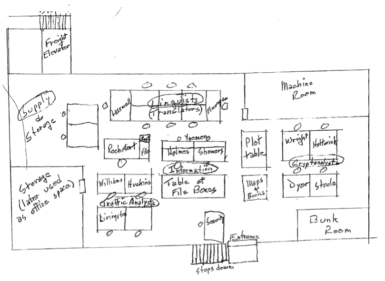
(Mac’s diagram of The Dungeon. No kidding- the direction of the Pacific War was determined by the dozen men who sat at these desks. It is both amazing and humbling to recognize what an elite team can do).
Copyright 2016 Vic Socotra
www.vicsocotra.com
